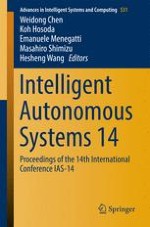This book describes the latest research advances, innovations, and visions in the field of robotics as presented by leading researchers, engineers, and practitioners from around the world at the 14th International Conference on Intelligent Autonomous Systems (IAS-14), held in Shanghai, China in July 2016. The contributions amply demonstrate that robots, machines and systems are rapidly achieving intelligence and autonomy, attaining more and more capabilities such as mobility and manipulation, sensing and perception, reasoning, and decision-making. They cover a wide range of research results and applications, and particular attention is paid to the emerging role of autonomous robots and intelligent systems in industrial production, which reflects their maturity and robustness. The contributions were selected by means of a rigorous peer-review process and highlight many exciting and visionary ideas that will further galvanize the research community and spur novel research directions. The series of biennial IAS conferences, which began in 1986, represents a premiere event in the field of robotics.
